
PRACTICING THE PATH

Wisdom Publications
199 Elm Street
Somerville, MA 02144 USA
www.wisdompubs.org
2003 Yangsi Rinpoche
All rights reserved.
No part of this book may be reproduced in any form or by any means, electronic or mechanical, including photography, recording, or by any information storage and retrieval system or technologies now known or later developed, without the permission in writing from the publisher.
Library of Congress Cataloging-in-Publication Data
Yangsi Rinpoche.
Practicing the path : a commentary on the Lamrim Chenmo / Yangsi Rinpoche ; foreword by Geshe Lhundub Sopa ; preface by Lama Zopa Rinpoche ; translated by Tsering Tuladhar ; edited by Miranda Adams.
p. cm.
ISBN 0-86171-346-X (pbk. : alk. paper)
1. Tso-kha-pa Blo bza-grags-pa, 13571419 Lam rim chen mo.
I. Tuladhar, Tsering. II. Adams, Miranda. III. Title.
BQ7950.T754L344439 2003
ISBN 0-86171-346-X
First Edition
08 07
6 5 4 3 2
Cover design: Nita Ybarra
Interior design: Gopa and Ted2, Inc. using Adobe Garamond fonts, 10.75/14
Wisdom Publications books are printed on acid-free paper and meet the guidelines for the permanence and durability set by the Council of Library Resources.
Printed in Canada
 This book was produced with Environmental Mindfulness. We have elected to print this title on 50% PCW recycled paper. As a result, we have saved the following resources: 37 trees, 26 million BTUs of energy, 3,285 lbs. of greenhouse gases, 13,635 gallons of water, and 1,751 lbs. of solid waste. For more information, please visit our website, www.wisdompubs.org
This book was produced with Environmental Mindfulness. We have elected to print this title on 50% PCW recycled paper. As a result, we have saved the following resources: 37 trees, 26 million BTUs of energy, 3,285 lbs. of greenhouse gases, 13,635 gallons of water, and 1,751 lbs. of solid waste. For more information, please visit our website, www.wisdompubs.org
CONTENTS
Note: A comprehensive outline of the commentary with page references can be found on pages 48997.
I AM VERY HAPPY to see the publication of this book on Tsongkhapas Lamrim Chenmo. The lamrim is the essence of all the Buddhist teachings, and shows how to put into practice all of the various scriptures: Hinayana, Mahayana, and Tantrayana. Although there are many different sutras and tantras by the Buddha, and many commentaries on these, the lamrim arranges the entire path in stages, in a practical manner, so that individuals can go from the beginning all the way up to enlightenment.
As is well known, lam means path in Tibetan and rim means stages. The great teacher Atisha summarized all the Buddhist scriptures in his Lamp for the Path to Enlightenment, the root text for the lamrim tradition. His text divides beings spiritual perspectives into three levels: beginning, intermediate, and finally, highest. Based on that division, the Lamp for the Path shows how to begin, explaining the main activities and emphasis of that initial stage. When that is fully developed and a practitioner reaches the intermediate level, the Lamp for the Path describes the meditations and emphasis at that stage. Finally, it describes the practice of the highest beings, the Mahayanists. Of these three levels, the first two mainly emphasize how an individual can be liberated from misery or from an impure life, while the third emphasizes liberating others, starting with ones own dear mother. Seeing all beings as equal to ones dear mother, one develops the wish to liberate them all. The third level presents the ideal way to liberate them.
There is no sentient being who does not want to be free from misery. Each one of us wants peace and happiness, and particularly everlasting peace and happiness. Yet we do not know how to bring that about, due to ignorance and the other delusions, which obstruct knowledge. As Shantideva says:
Although they wish to escape suffering
They run straight to the causes of suffering.
Although they wish happiness, out of ignorance
They destroy their own happiness, as if it were their enemy.
All the teachings of the Buddha, either directly or indirectly, were taught for the sake of wisdom, to free sentient beings from misery so that they may attain the highest goal of lasting happiness. Although 84,000 different teachings were taught for these purposes, the lamrim arranges those practices to make it easier to grasp and actualize their essential meaning. By condensing and arranging them in an orderly way, the lamrim teachings include the sequence, the variety, and the essence of all the teachings of the Buddha.
As Je Tsongkhapa says in his short lamrim text, the Condensed Meaning:
These stages on the path to enlightenment
Fulfill all the aims of the nine types of beings without exception.
Their instructions, a wish-fulfilling gem,
Gather together the rivers of thousands of excellent texts.
Thus they are indeed an ocean of glorious good explanation.
Since Je Tsongkhapas Lamrim Chenmo, the great exposition on the lamrim, is an extremely deep teaching, it is possible to give numerous different explanations of it. Thus, even though many others have commented on the text before, I feel it will be of great benefit for people to have this detailed explanation by Yangsi Rinpoche.
Geshe Lhundub Sopa
T HIS BOOK IS COMPOSED of teachings from Yangsi Rinpoches commentary on Lama Tsongkhapas Lamrim Chenmo given FebruaryApril, 2000 at Tushita Meditation Center in Dharamsala, India. The entire scope of teachings has made its way into this book, although in editing for print much of the repetition has been cut. This is a traditional commentary in the sense that Rinpoche followed the outline of the root text more or less faithfully and touched on all of its key points. It is not a traditional commentary in the sense that Rinpoche diverged from the root text considerably at many points, supporting the given topic with related or source material from significant Indian and Tibetan sources outside of the Lamrim Chenmo, which itself, in root form, makes extensive use of secondary sources to support its presentation of the path. Rinpoche teaches in this commentary how the lamrim tradition is like a key opening all the doors of the Buddhist scriptureswith the understanding of the main points of the lamrim, one is able to contextualize and understand any text within the tradition, and likewise is able to understand all of the main points of practice on the path to enlightenment. With this commentary, I hope, the reader will be able to do likewise.
In transforming this commentary from an oral teaching to a written text, I attempted to leave Venerable Tsenlas exquisite translation of Rinpoches words as pristine as possible while maintaining consistency and clarity and making the necessary syntactical reorganization to present a coherent written text. All of the points that were ambiguous in translation were checked and clarified under Rinpoches guidance, as were most of the quotations. Also, some of the original material has been sorted and reordered from the presentation that was given in the course in order to follow Lama Tsongkhapas outline as faithfully as possible.
I have documented the source material that was used both by Rinpoche in his preparation for the course and myself in the editing process as accurately as possible, although Rinpoche did use a massive body of commentary to support these teachings and I am certain that some of them were overlooked. Also, due to time constraints I was unable to catalogue the texts in the bibliography to the detail that I would have liked, and for that, and for any other inevitable mistakes that may appear in the edited text, I take complete responsibility and offer my most sincere and heartfelt apologies.
Next page
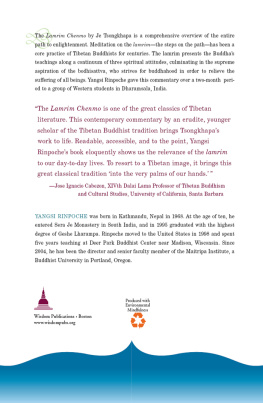
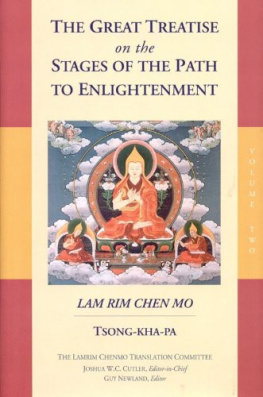
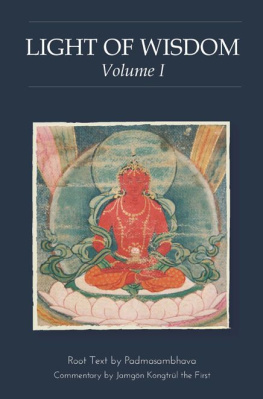

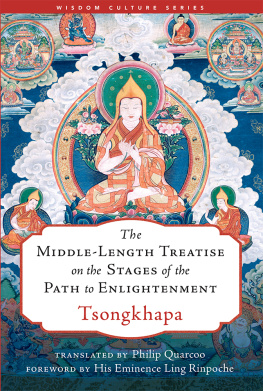
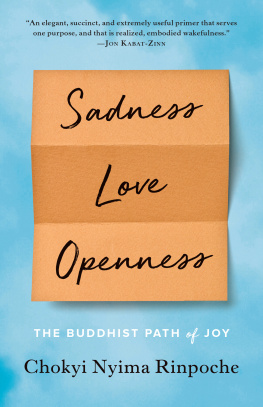

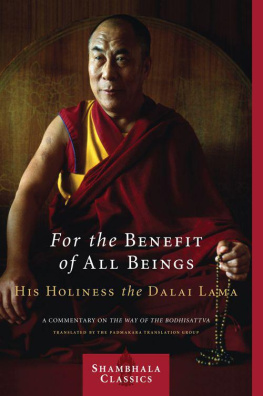

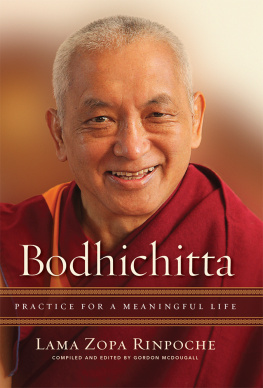
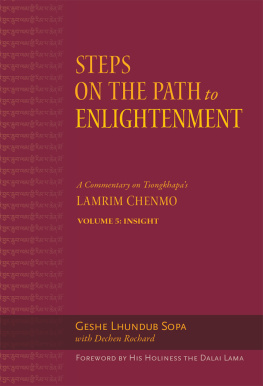

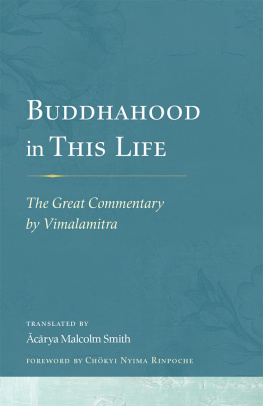


 This book was produced with Environmental Mindfulness. We have elected to print this title on 50% PCW recycled paper. As a result, we have saved the following resources: 37 trees, 26 million BTUs of energy, 3,285 lbs. of greenhouse gases, 13,635 gallons of water, and 1,751 lbs. of solid waste. For more information, please visit our website, www.wisdompubs.org
This book was produced with Environmental Mindfulness. We have elected to print this title on 50% PCW recycled paper. As a result, we have saved the following resources: 37 trees, 26 million BTUs of energy, 3,285 lbs. of greenhouse gases, 13,635 gallons of water, and 1,751 lbs. of solid waste. For more information, please visit our website, www.wisdompubs.org